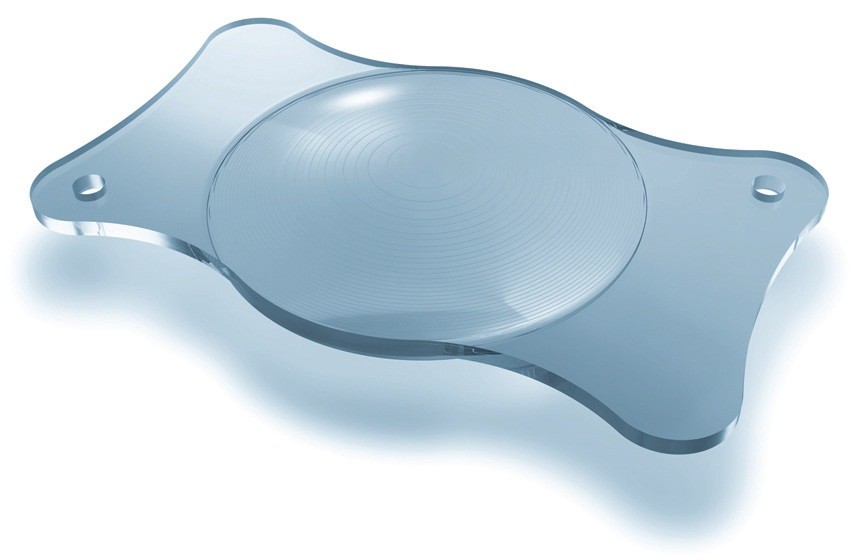
Thanks to their small size, intraocular lenses (IOL) provide an excellent technology. Modern IOL focuses light on the retina, imitating refractive qualities of the natural lens in order for the patient to enjoy a better vision after the surgery.
Usually manufactured with acrylic material, the lens optics measures approximately 6 mm wide and the thickness varies depending on the lens power. IOL, made with a soft, pull-down material, can be implanted through a microincision of around 2.0 mm.
It is the most common intraocular lens type and presents a monofocal optics which provides a simple corrective power, designed to offer a good quality of distance vision. It corrects long-distance vision, although the patient still needs to wear glasses for reading or keeping the eyes on something (up close).
Bifocal lenses are corrective lenses which include two different correction degrees used basically by people affected by presbyopia, who also need correction for myopia and hypermetropia.
Trifocal lenses are the latest lenses on the market and they allow a three-distance correction: (up close, mid-distance, and long-distance). They use a better state-of-the-art technology and offer more than one focal point.
The effect of basic lens is calculated so as to offer a good distance vision and the additional focal points allow to see up close, for example to read, write or carry out tasks which require high focus.
In case the patient suffers from astigmatism, two types of lenses can be used.
Toric monofocal intraocular lens: It allows long-distance vision correction, although the patient still needs to wear glasses in order to see nearby objects, due to astigmatism.
Toric multifocal intraocular lens: It allows not only correction of all-distance vision, but also astigmatism correction. They are designed for patients who suffer from astigmatism and offer a special toric correction for long-distance vision and additional focal points as well, which allow to see nearby objects.
Contact us or request an appointment with our medical team.